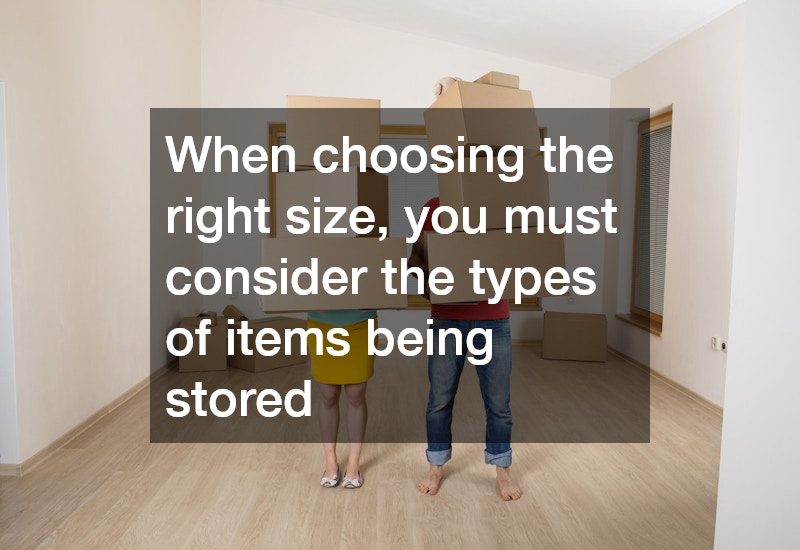Choosing the right size for a local storage unit is essential to ensure that your belongings are stored efficiently and safely. Whether you are moving, decluttering, or simply need extra space, understanding how to select the appropriate unit size can save you both time and money. Delve into the different available sizes, factors to consider when making your choice, and tips to avoid common mistakes.
As the demand for storage units continues to rise, many providers offer a range of options tailored to meet diverse needs. A major factor in this selection process is assessing the volume and types of items you intend to store. Learning what sizes are available and how to choose the right one will enhance your storage experience and potentially ease the stress related to moving.
What Sizes of Storage Units Are Available?
Storage units typically come in a variety of sizes to cater to different needs. Standard options usually include small, medium, and large units. Small units generally measure 5×5 feet and can accommodate boxes or seasonal items. They are ideal for students or individuals looking for short-term storage solutions.
Medium storage units, on the other hand, usually measure 10×10 feet and can fit the contents of a one-bedroom apartment. This size provides more flexibility for those needing to store larger furniture pieces, such as sofas or mattresses, along with several boxes.
Large storage units may range from 10×15 feet to 10×30 feet, accommodating the contents of bigger homes or even business inventory. Knowing the specific sizes available can guide you in making a more informed choice based on your unique requirements.
How Do You Determine What Size You Need?
Determining the right size for your storage unit requires a careful assessment of the items you plan to store. Start by listing the furniture, appliances, and boxes you intend to place in storage. This will help you gauge the overall volume of your belongings.
Next, consider whether you need to access these items frequently or if they will be left in storage for an extended period. If you plan to retrieve items regularly, it may be wise to allow for additional space to navigate without disturbing other boxes or furniture.
Lastly, consider using a storage calculator tool; many storage facilities offer this tool on their websites. By inputting your items, you can receive an estimate of what size unit would best fit your needs, simplifying your decision-making process.
What Factors Should You Consider When Choosing a Size?
When choosing the right size, you must consider the types of items being stored. Fragile items like glassware may require protection from stacking too high or being surrounded by heavy furniture. Knowing the characteristics of your belongings is crucial in determining the space needed.
Another factor to consider is your future storage needs; if you predict a change in your circumstances, such as an upcoming move or new acquisitions, planning for a larger unit may save you the hassle later. This foresight can prevent the need for renting additional units sooner than anticipated.
Access to the storage unit is another important aspect. If you intend to visit the unit frequently, a larger unit will enable you to organize your items and provide enough access without creating a bottleneck. Evaluating your access needs can help direct your choice toward the most suitable unit size.
Is It Worth Paying for a Larger Unit?
The question of whether investing in a larger unit is worthwhile often hinges on your current and future needs. While a larger storage unit may come with additional costs, it can potentially save money in the long run by allowing for flexibility in what can be stored.
Moreover, opting for a larger unit can enhance your convenience, especially if you anticipate needing extra space in the near future. It permits easy access and eliminates the complexities associated with renting multiple smaller units, which can often lead to higher combined costs.
However, it is critical to weigh the potential of paying a bit more for an extra space against the necessity of that space. If you determine that you won’t need the added room, then a smaller unit could be a more intelligent, cost-effective choice.
What Are the Common Mistakes to Avoid When Selecting a Size?
One prevalent mistake individuals make when selecting a storage unit is underestimating their space needs. People often think they can fit more items into a smaller space than is practical, leading to complications down the line. This can cause damage to belongings and create additional stress when trying to retrieve items.
Another common pitfall is neglecting to account for accessibility. If you choose a unit that is too packed, you may find it challenging to reach specific items when you need them. Planning for organized storage can prevent frustration caused by not being able to find stored items quickly.
Lastly, failing to consider future needs can lead to issues as life situations change. Whether it’s storing new furniture, seasonal items, or business products, it’s always a good idea to think ahead. Avoiding these mistakes allows for a streamlined moving process and greater peace of mind.
Selecting the right storage unit size is a crucial decision that should involve careful consideration of various factors. Understanding the available sizes and assessing the volume of items you plan to store are vital components of this consideration. Moreover, evaluating future needs and accessibility will aid in making a wise choice.
By avoiding common mistakes, such as underestimating space requirements or neglecting to plan for future needs, you can create a more efficient and stress-free storage experience. Remember, your storage unit should cater to your unique circumstances, ultimately providing a reliable solution for your storage challenges.
Take the time to reflect on your individual needs and preferences before making a decision, ensuring that the investment you make in local storage truly meets all your requirements.




